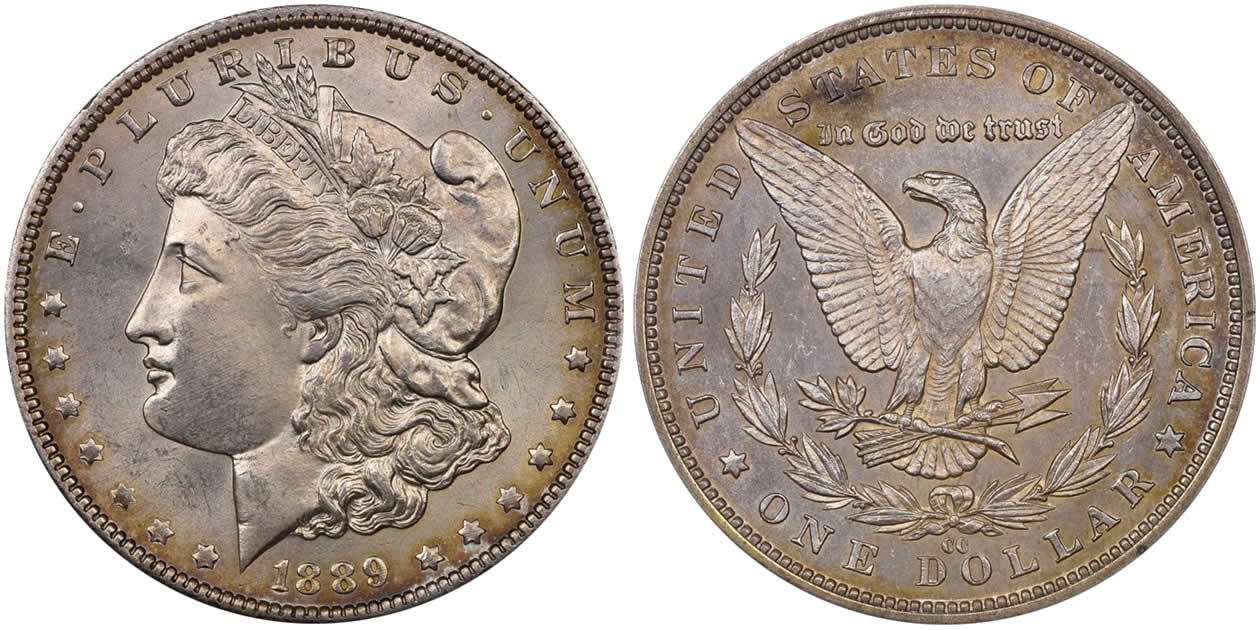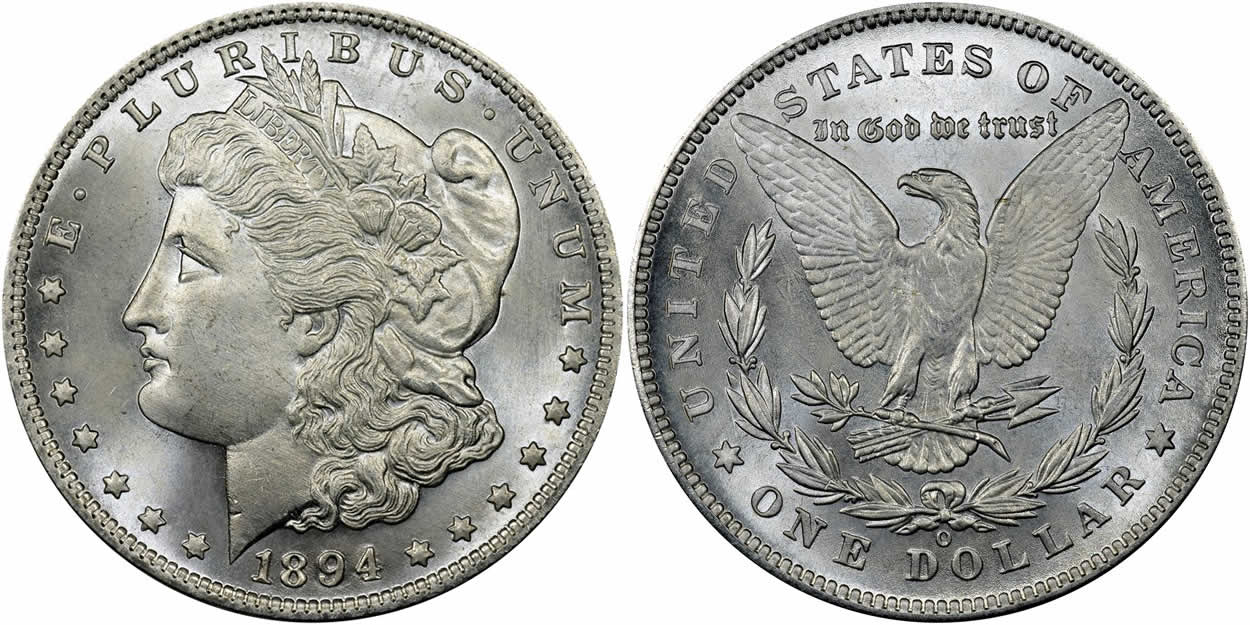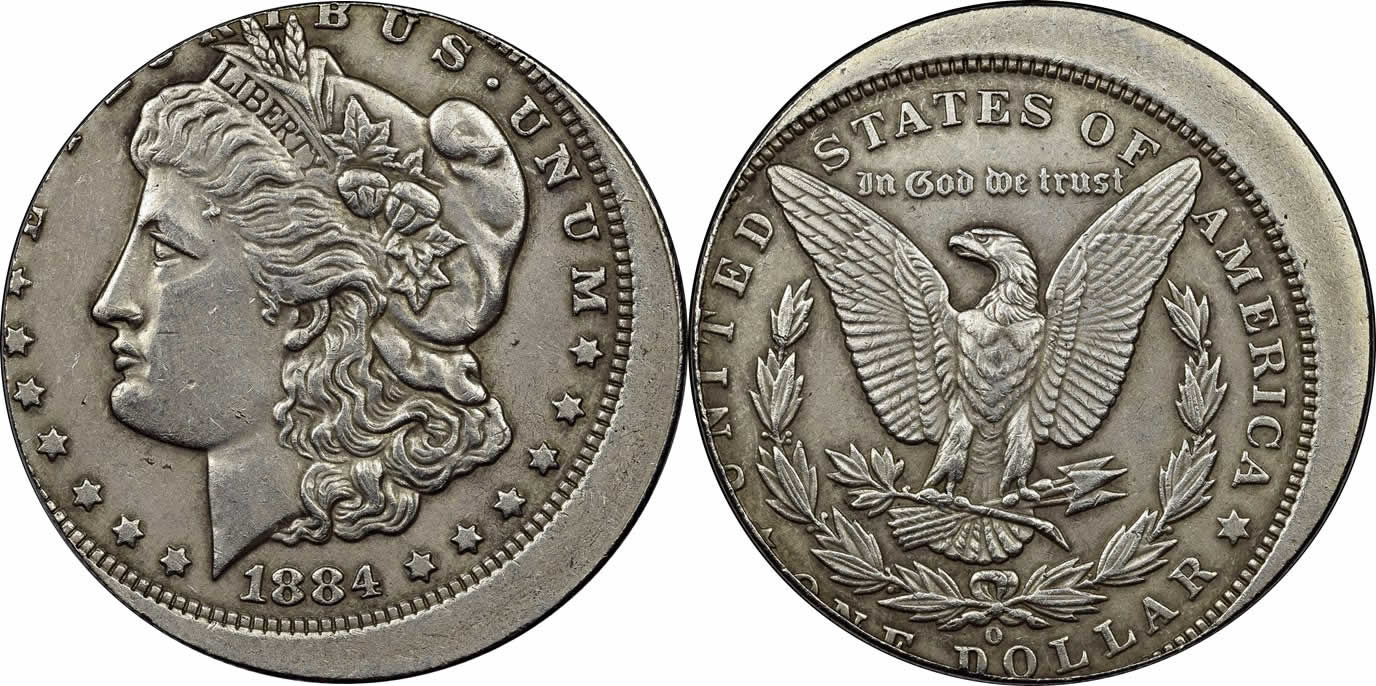NGC - With interest in these beloved silver dollars reaching new heights, it's important to remember that counterfeiters often target this series.
There is high interest in the 2021
Morgan dollars soon to be issued by the US Mint to commemorate the 100th anniversary of the silver series' swan song. This is generating greater enthusiasm for the vintage versions of these beloved coins, which were issued from 1878 to 1904, and then again in 1921.
NGC has certified more than 3.7 million
Morgan dollars, and its expert grading team has identified plenty of counterfeits as well. Here are some examples, which demonstrate the lengths to which counterfeiters will go to make an illicit buck.
Altered Date: 1893-S Morgan DollarNGC has compiled a list of the Top 50 Most Commonly Counterfeited U.S. Coins, and the first
Morgan dollar on the list (in the No. 10 spot) is the 1893-S. Often, a counterfeiter will add an 'S' mintmark to a much more common example from Philadelphia (which has no mintmark). In the case of the
Morgan dollar pictured here, a counterfeiter opted to move metal around in the date on the obverse. The misshapen '3' is a giveaway that this coin started its life with a different date.
 An altered date 1893-S Morgan Dollar
An altered date 1893-S Morgan Dollar Detail of the date of an authentic 1893-S Morgan dollar (left) and the altered exampleJoined Halves: 1889-CC Morgan Dollar
Detail of the date of an authentic 1893-S Morgan dollar (left) and the altered exampleJoined Halves: 1889-CC Morgan DollarThe other Morgan on NGC's "Top 50" list is the 1889-CC. Similar to the 1893-S, many fakes of the 1889-CC are created by gluing a 'CC' mintmark to the proper spot on the reverse. In the case of the 1889-CC shown here, the counterfeiter showed some ambition by joining the obverse of a Philadelphia Morgan bearing the 1889 date with the reverse of a Morgan bearing the 'CC' mintmark, likely from 1883 or 1884. A closer look reveals a seam at the edge of the coin, unmasking the deception.
 1889-CC Morgan dollar with joined halves
1889-CC Morgan dollar with joined halves A seam can be seen on the rim of the reverseAdded mintmark: 1886-S Morgan Dollar
A seam can be seen on the rim of the reverseAdded mintmark: 1886-S Morgan DollarCounterfeiters don't always target high-value key-date coins like the 1889-CC and 1893-S. In the case of this coin, a counterfeiter created the appearance of an 1886-S issue (worth only a few hundred dollars) by adding a mintmark to an 1886 from Philadelphia, one of the easiest Morgans to find in Mint State. While phony mintmarks are often glued to the coin (often creating a discolored area), this counterfeiter took things to another level by drilling through the edge of the coin to emboss a new mintmark from inside the coin!
 1886 Morgan dollar with an added "S" mintmark
1886 Morgan dollar with an added "S" mintmark A small gray area can be seen on the reeding on the part of the edge closest to the mintmarkPossible laser-created dies: 1894-O Morgan Dollar
A small gray area can be seen on the reeding on the part of the edge closest to the mintmarkPossible laser-created dies: 1894-O Morgan DollarForgers are taking advantage of technology to assist in their shameful deeds, including creating dies by using lasers. Such a trick is suspected in the case of this counterfeit. Sometimes, counterfeit dies are struck with insufficient force, creating weak details that easily identify a coin as a fake. In this case, the details in Liberty's hair and ear are unusually strong, outpacing what is expected from ones struck at the New Orleans mint.
 Counterfeit 1894-O Morgan Dollar
Counterfeit 1894-O Morgan Dollar Close-ups of the counterfeit (left) and genuine (right) 1894-O Morgan DollarsA fake error: 1884-O Morgan Dollar
Close-ups of the counterfeit (left) and genuine (right) 1894-O Morgan DollarsA fake error: 1884-O Morgan DollarOccasionally, a counterfeiter add toning or something else to distract a would-be buyer from potential flaws in a spurious coin. In this case, the counterfeiter mimicked an off-center strike error, a dramatic mistake that would add significant value to a genuine coin. But this fake has plenty of red flags, including the incorrect shape of Liberty's eye.
 This counterfeit Morgan dollar error features rounded high points, dark areas and an eye that differs from a genuine specimen.
This counterfeit Morgan dollar error features rounded high points, dark areas and an eye that differs from a genuine specimen. Note the eye shape of a genuine Morgan dollar (left) versus the counterfeit (right)Fake GSA Holder: 1879-CC Morgan Dollar
Note the eye shape of a genuine Morgan dollar (left) versus the counterfeit (right)Fake GSA Holder: 1879-CC Morgan DollarHere's a particularly inventive counterfeit. Not only did the forger create a phony
Morgan dollar, but they also created a phony GSA Holder to house it. Such holders, with their distinctive black cores, were used for coins released from the GSA Hoard in the 1970s. Comparing the fake holder here to a genuine one certified by NGC shows the inconsistencies in its design.
 A fake GSA 1879 Morgan dollar (left) and a genuine example (right)
A fake GSA 1879 Morgan dollar (left) and a genuine example (right) 































